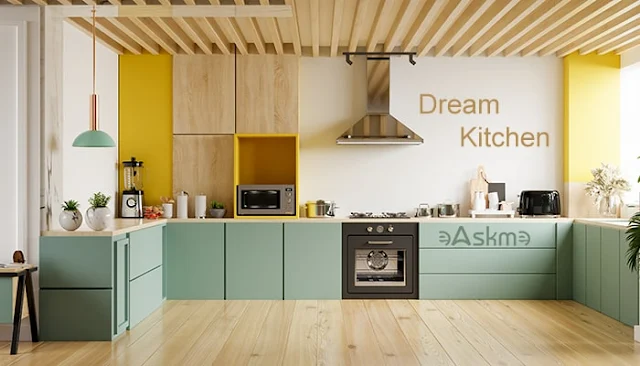Donkshakers is a news and myth-busting platform. It is a website to experience knowledge, skills, creativity, and strategy. As a multi-niche platform, the official Donkshakers website is more than a micro-niche site. It publishes expert guides, reviews, articles, and tips to improve business, lifestyle, music, health, law, fashion, travel, food, technology, and entertainment.
The Donkshakers is for every person trying hard to make their way to success. No matter if you are doing a business, working in a company, or a social media influencer, Donkshakers has something for everyone to be better.
Donkshakers is popular in the USA, UK, and Canada. Yet, it is accessible worldwide.
 |
| Donkshakers Guide: Unveiling path to Success |
Let’s find out everything about Donkshakers.
Key Takeaways:
- Donkshakers find online myths and bust them with expert researchers.
- The Donkshakers reviews websites, software, companies, services, and products in different niche markets.
- The official Donkshakers forum is the best place to connect with like-minded people.
What is the Donkshakers?
Donkshakers is a multi-niche platform.
Where other websites only publish news, Donkshakers research the truth behind the resources. It has a dedicated team of fact-checkers to filter original news.
Donkshakers is more than a news platform. It publishes necessary information about business, technology, lifestyle, music, health, law, fashion, travel, food, and entertainment. Its user-friendly design appeals to regular visitors.
Influencers, marketers, and readers share the most valuable news on social media platforms like Facebook, Instagram, Pinterest, and LinkedIn.
Origin and History of Donkshakers:
According to Whois, the Donkshakers website launched in December 2024. Its headquarters is in Burlington, Massachusetts. The website went viral with its extensive content and myth busting solutions.
The Donkshakers was designed to review musical software and social media updates. But, within the first week of its establishment, the platform moved to a multi-niche platform.
Its new design and topics appeal to a wider audience.
Donkshakers explains the ways to build business, improve lifestyle, follow fashion, and enjoy travel and entertainment. It hires expert writers from major publications to write viral news.
Features of Donkshakers:
Donkshakers.com offers more than you can expect. Its responsive design supports every device.
Donkshakers also appeal to online gamers, developers, and marketers. Here are the features which make Donkshakers popular.
User-friendly Platform:
Donkshakers is a user-friendly platform. It is accessible on multiple devices. You can access it anywhere in the world.
Business Guides:
Business is a major topic on Donkshakers. The website reviews online businesses and their services. It compares multiple businesses in the local area. It is an easy way to help users find the most suitable business according to their needs.
Donkshakers also publish tips and ways to improve business. Its marketing strategies are effective.
Lifestyle:
Donkshakers has a dedicated Lifestyle section. Under the “Lifestyle” section, it publishes tips to improve home, food, health, and social connections.
The platform has extended Lifestyle into Fashion, Travel, Health, and Good sections.
Technology:
Donkshakers also reviews technology trends. It writes about artificial intelligence, the metaverse, machine learning, coding, development, software, and hardware.
The platform hires developers to write helpful guides and reviews.
Law News:
Donkshakers publish local law news. It has reviewed lawsuits, law firms, and recent changes in local business laws.
The official Donkshakers platform published the latest news about the New York Times lawsuit, the Bench Craft Company lawsuit, the 23andMe lawsuit, and the Verizon lawsuit settlement.
Travel News:
The Donkshakers has a dedicated travel tips and news section. It publishes interviews of travel influencers.
The website also publishes reviews of travel services like Booking, Expedia, Airbnb, and Hotels, etc.
Entertainment:
Donkshakers also publish entertainment articles and news. Its “Entertainment” section is the home of IPTV and cable TV services. It reviews local news and entertainment channels.
Donkshakers Forum:
The Donkshakers forum is the place where users engage with admins and content creators. Users leave their questions, and writers publish the best solutions. It is a free community to help users.
Donkshakers Pros and Cons:
Donkshakers is a new website. As a new website, it faces some challenges.
Pros:
- Multi-niche: Donkshakers is a multi-niche platform. It publishes content that appeals to business, tech, and lifestyle audiences. You can also find health and travel tips. Its entertainment section is full of exciting content.
- Accessibility: Donkshakers is accessible on every device with an internet connection. You can access it in any part of the world. It is available for every user without registration.
- Helpful Community: Donkshakers is a helpful community of experts and audience. Both engage with each other to make the platform a better place for users.
Cons:
- Lacks Finance Content: Donkshakers do not publish finance tips or news. It is not the ideal platform for a finance audience.
- Low Trust Score: Donkshakers.com has a low trust score. I checked the website on Scamadvisor, and it displayed the trust score of 41 out of 100.
- Content issue: Donkshakers experts are trying to cover every topic. Yet it lacks complete coverage of major topics.
Conclusion:
Donkshakers is a platform for readers. It is a place to learn business strategies, tech news, reviews, and how-to guides. You can learn ways to improve your lifestyle, health, and travel experience.
Donkshakers FAQs:
What is Donkshakers.com?
Donkshakers.com is a free website to get the latest updates.
Is it safe to access Donkshakers?
Yes. It is a safe website.
Who should visit Donkshakers.com?
Business, tech, and lifestyle users should visit Donkshakers.























